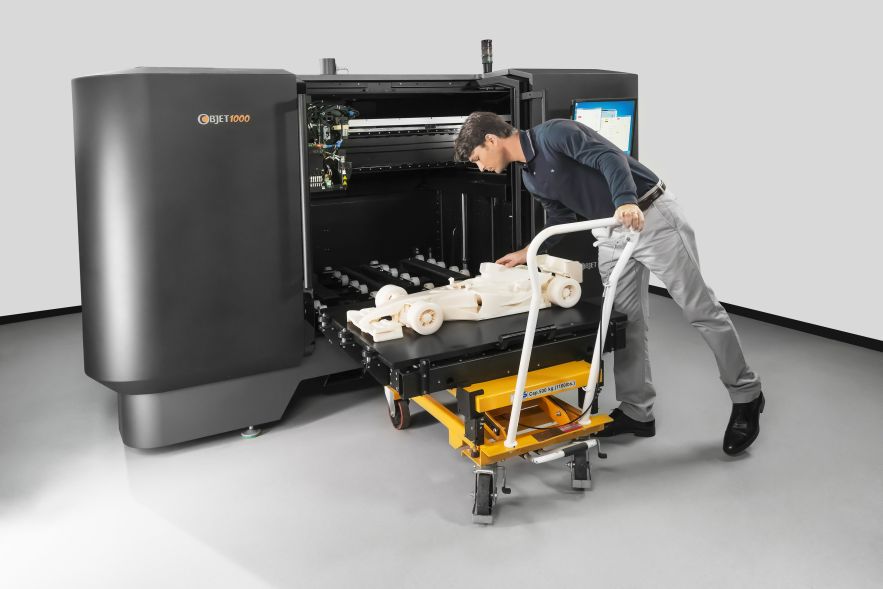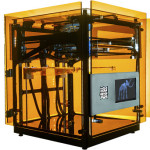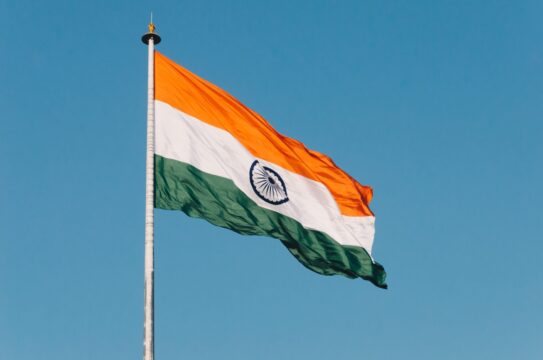 Although 3D Printing technology has been around since the 1980s, 3D printers have become commercially available from 2010 and their prices have dropped considerably. A marked jump in the value of the market for 3D printers and services globally was seen in the year 2012 with almost a 29% rise in the value to $2.2 billion as compared to 2011.
Although 3D Printing technology has been around since the 1980s, 3D printers have become commercially available from 2010 and their prices have dropped considerably. A marked jump in the value of the market for 3D printers and services globally was seen in the year 2012 with almost a 29% rise in the value to $2.2 billion as compared to 2011.
What is 3D printing?
3D Printing or Additive Manufacturing is a process by which almost any three-dimensional object of any shape can be made from a digital model. This is achieved by an additive process whereby layers of materials are laid down in different shapes. This method differs vastly from traditional machining techniques that rely on the removal of materials either by cutting or drilling which are subtractive processes. 3D printing technology has found varied uses and benefits ranging from rapid prototyping to applications in construction, architecture, engineering, medical industries, fashion, jewellery, military, automobiles, aerospace and in a host of other fields. In the near future it is expected that 3D printers would become easily available consumer goods, thanks to the fact that they can offset the capital costs in procuring them by enabling people to “print” common household items rather than purchasing them from the market.
Not to be left behind, a few early adopters and pioneers in India have embraced 3D printing technology and have set up successful businesses around it. We spoke to a few of them about the opportunities, challenges and the future of 3D printing in India. Here’s what they had to say.
Opportunities in 3D Printing

Nikhil Velpanur, Co-founder, Brahma3
Nikhil Velpanur, co-founded Brahma3 based out of Bangalore along with his friend Arvind Nadig in August 2013. The company manufactures 3D printers and offers 3D printing services. The idea behind setting up Brahma3, a design studio was to work on technologies that will change the world and have a powerful impact over the next 10-20 years. While starting out, the two friends realized that they needed to get their hands on a 3D printer to print parts and designs for their projects. Even though they had never seen a 3D printer before, the videos that they saw online got them very excited. However the problem was that 3D printers were not available in India and to import one was very expensive. They soon came across an open-source community that had plans, drawings and schematics detailing the process of building a 3D printer.

Brahma3 Anvil
In about 15 days, Nikhil and Arvind were successful in building one. Seeing a digital file transforming into a physical object in front of their eyes was a magical experience. Having tasted success in building a 3D printer, both of them were convinced that this was the future and they saw an opportunity to build their very own dream 3D printer from scratch. With the idea of building the world’s best 3D printer that was both easy to use and aesthetically appealing, they launched the Brahma3 Anvil in 3 months. Encouraged by the fantastic reception that Brahma3 Anvil has got so far, Nikhil and Arvind have dreams of building India’s best 3D printing company.
Talking about the opportunities that entrepreneurs can explore in the 3D printing field, “Every single industry will be revolutionized by 3D printing. From printing organs and prosthetic limbs, to space stations, education, science, manufacturing, fashion etc. The primary skill-sets that a person needs to have is to be open to learning and absorb as many skills as possible. 3D printing is not hardware, its not software, its not design – but a perfect combination of all. So if anyone wants to cut their teeth in 3D printing and setup a company of value, they need to be open, and get used to being multidisciplinary in their approach. Since the 3D printing ecosystem and market is just opening up, there will be millions of jobs created in ways we cannot imagine,” says Nikhil.

Sagar Shah, Sohrab Kothari & Samkit Shah, Co-founders, SAHAS Softech
Samkit Shah, Co-founder of Mumbai-based SAHAS Softech founded in April 2012, believes that 3D printing is applicable across almost all segments of product development. His company offers consulting, 3D printing & rapid prototyping and model making among many other services. He and the company’s other co-founders, Sagar Shah and Sohrab Kothari are extremely excited to be present at a time when 3D printing technology is maturing and can churn out products which can be used directly because of the range of materials and finishes available that promise to take innovation and product development to the next level. They are of the opinion that it is going to be extremely vital for industries where current technologies are restricted as far as production is concerned, for instance, in the manufacturing of aircraft, using additive manufacturing components can be lighter and monolithic. Their clients include makers of medical components, toy manufacturers, IT companies and real estate companies to name a few.

Ijas Abdulla, Co-founder, 3Dify
Ijas Abdulla, co-founded 3Dify along with Rizwan Hashim and Jerry Althaf in June 2013. Their Mumbai-based company offers 3D printing as a service. Presently, the offerings are targeted at industries like architecture, jewellery and rapid prototyping, preparing concept prototypes and models. On why he go into 3D printing – “We believe that 3D printing will drive the next industrial revolution. Increasingly we are seeing a pattern of decline of ownership from businesses. For businesses especially SMEs, it does make sense not to make a capital investment unless they have a significant daily requirement. We believe an opportunity exists here for us to offer 3D printing as a service. Also, we are looking at the consumer market and looking at how we can extend our service to them especially through an online platform,” he says.

Nitin Gandhi, Co-founder, LBD Makers
Three young engineers Nitin Gandhi, Jatin Sharma and Shivani Gupta co-founded LBD Makers, an organization based in Chandigarh that sells 3D printers and also conducts workshops that educate school and college students about 3D printing. Founded in August 2013, they started LBD Makers, “by organizing hands-on workshops in schools so that students can make new things and learn to repair basic stuff. By doing so, we found that a 3D printer can revolutionize makers. We ordered a 3D printer and organized a few workshops. Later education institutions started approaching us as they actually wanted 3D printers in their institutions. We realized that the 3D printer available in the market had some shortcomings and worked on making a 3D printer that is user friendly.” With continuous evolution they are coming up with a printer that can print bi-colour objects.

Prateek Lohia, Owner, 3D Labs India
Prateek Lohia, Owner of 3D Labs India based in Kolkata started his company soon after college as he felt the next big thing after e-commerce was 3D Printing. He feels that bespoke products and industrial/commercial prototyping are areas where 3D Printing will benefit people the most. He adds that the time to market is reduced drastically when the prototypes are made by printing rather than the regular methods of prototyping.
Challenges in 3D Printing
Nikhil sums up the many challenges that hound the 3D printing field in a single sentence – “Nobody knows what 3D printing is!” He goes on to add, “That is the first challenge to create the market itself and quickly show the benefits and how 3D printing is going to change the world. Except for a few investors, the investment community traditionally has a no risk taking appetite and blindly fund things that are copied from successful Silicon Valley business models. So doing things that have never been done before is not going to get any support. These guys are going to hurt the 3D printing ecosystem for future companies since they do not understand it or realize that it is a capital intensive hardware business.”
Echoing a similar sentiment, Samkit also says that funding at the time of setting up their business was the most difficult stage as no bank or investor was aware of this industry and even more they could not believe how 3D printing could do what is being claimed. Some of the other challenges that he lists are –
1. The technologies are extremely capital intensive and so are the materials which are higher than the prices prevalent outside India as everything is imported from the developed countries.
2. A lot of design participants/entities (especially small scale & medium scale) still do not believe in prototyping as an investment but see it as a costly expenditure.
3. Only if materials could be engineered and locally produced, the cost could come down drastically directly resulting in a healthy demand and supply.
4. The size of 3D printing equipment restricts a lot of products from being made at one go.
5. A lack of in-depth knowledge about this 3D printing technology makes companies who opt for prototyping, finally either doing away with it entirely or finding another alternative. A common occurance is including in their budget, the prices of items and materials as mentioned in the newspapers which many a time publish prices of only low-cost equipments and machines as compared to industrial grade equipments which are a lot more expensive. This makes them postpone their need entirely ignoring the cost-benefit ratio, which if taken into consideration would go a long way in companies including 3D printing in their design, research and even manufacturing cycles.
6. Not many understand the various 3D printing technologies available today and most of the service bureaus do not provide design-prototyping-manufacturing assistance which largely reduces the reach of 3D printing.
What do investors look for before funding a 3D Printing Startup?

Ganesh Krishnan, Serial Entrepreneur, Chairman Portea Medical and, Founder & Ex-CEO of TutorVista
Ganesh Krishnan, Serial Entrepreneur, Chairman Portea Medical and, Founder & Ex-CEO of TutorVista has this to say about investing in 3D printing startups –
3D printing could possibly be the next frontier in the technology world and I do not want to miss that boat. So it is likely that I will invest given very specific circumstances –
1. Team – It is absolutely essential that there is a strong team of people who understand their stuff. They should know the industry, the current players, the landscape, the future of the industry and technology like the back of their hand. I might even bring in an expert to survey them technically before I decide to invest.
2. The Product – 3D printing has plenty of draws – cost and quality are by far the largest. Does the product that the team has built affect either one of these two, if not both?
3. The Customer – If I am investing in a startup, I want to see that they are clear that their technology is best used by say a small-time jewellery manufacturer in Ghana or a children’s toy manufacturer in Taiwan. When they have this clarity, I am in a better position to evaluate them.
4. The Value Proposition – Ultimately, I want to hear one thing from the startup I will invest in – “I have built this 3D printer that will be used by artisans in India making artificial jewellery. It will cut their costs by Rs 20 per kg of stainless steel they use and make their process faster. The artisan will recover costs in 3 weeks and we will turn a profit in 6 months.” Come tell me that, and I will be investing in you tomorrow.
His advice to entrepreneurs is to first and foremost, survey the industry. See who everybody else is investing in. Know the industry inside out. What kind of 3D printing startups already exist? Who is being acquired? If you become the domain expert on 3D printing, the angels will trust you significantly more. Then see where the gaps are in the industry. What verticals have a clear leader and what verticals are still open. 3D Systems is buying startups left, right and centre. See what all areas they already have a stronghold on and what’s left unconquered.
The startup that gets every single small-medium enterprise that makes something – jewellery, plastics, ceramics – to use a 3D printer for their manufacturing. They are gold.

Akshita Ganesh, Associate Product Manager, Zynga
His daughter, Akshita Ganesh, a budding entrepreneur and Associate Product Manager, Zynga says her pet project would be to see how 3D printers in the toys and gifts space takes off. With a 3D printer, everybody can give a personalized, homemade gift of good quality. That will be a first.

Parag Dhol, Managing Director, Inventus Advisory Services (India)
Parag Dhol, Managing Director of Inventus Advisory Services (India) Pvt. Ltd. says, “Indeed, 3D printing is an emerging area. However most investors, even if initially unaware of a space, will spend time and effort if the venture or team excites them. As a teacher’s son, the adage, ‘If you can’t explain, you haven’t understood’ appeals to me.” He feels that startups engaged in 3D printing are not very different from other technology startups and as such entrepreneurs behind such ventures should “knock many doors and be prepared for many nos. Eventually, if your plan has promise, a ‘beholder’ will come along.” He goes onto add, “one specific piece of advice would be to make the differentiation clear – particularly because international dominance in hardware is a ground reality. Price, generally, cannot be it.”
Future of 3D Printing in India
Nikhil is optimistic about the future of 3D printing in India when he says, “3D printing in India is an exciting prospect as it is completely virgin and the most exciting use cases of 3D printing in a rural or social context is bound to come out of India. We have some inherent strengths since we are a country of makers – and India cannot wait to jump into 3D printing and leapfrog the rest of the world.” His company, Brahma3 plans to launch 3 new printers this year and build a strong community of makers and collaborators that would be aimed at exploring the future of 3D printing in India. Prateek feels that currently 3D printing is at its peak of a hype phase. The next few years will see a lot of consolidation happening in the market that would give a clear direction to the industry.
Ijas is clearly excited about the future of 3D printing in India when he says – “Additive Manufacturing or 3D printing grew 28.6% last year counting all types of revenues. The media attention has almost doubled in the past one year and the technology is now being slowly accepted by a lot of industries in India. Currently 3D printers can print using 84 different materials and big and medium sized companies are already exploring 3D printers to improve their operations.”
“Bespoke creations, along with the ability to easily design your products with a parametric system and distributed manufacturing in areas where regular manufacturing is not possible is the future in India,” says Prateek. Samkit has this to say about the future of 3D printing in India – “We see extremely vibrant activities happening as far as 3D printing is concerned but again the priority is material engineering activity, while equipment support has to be pursued more seriously.”
Advice to entrepreneurs and startups wishing to get into 3D printing
Samkit believes that the understanding of technologies is more important than the prices of equipments or raw materials and doing a thorough market research is important as every technology has a limited set of compatible materials and a limited set of target markets. Hence it is very important to match these constraints in order to have a faster break-even.
“3D printing has a variety of applications. If you want to start up, decide very early on, one or two industries you want to cater to and try to grow from there. Be wise while choosing the right machine for your company, for every application there are at least 3 to 4 companies manufacturing 3D printers who have a reseller in India. Do thorough research before you actually invest your money and acquire the printer,” says Ijas.
Prateek has a word of advice for those wishing to get into 3D printing. He says that a majority of hobby printers still have a very steep learning curve, and maintenance issues with multiple points of failure which can cause problems with prints. Hence investing time on the printer to understand what can go wrong will go a long way for the long term health of a company that is basing its entire existence on these printers. He also advices entrepreneurs, “to spend as much time with your machine as possible. Because that is what will help you achieve near impossible prints with top quality, instead of rushing to the market with your idea.”
Conclusion
According to Gartner, consumers and companies will spend more than $600 million on 3-D printer-related products in 2014. Given the huge opportunities that exist in the market and the rapid consolidation that is taking place, it is certain that 3D printing will be adopted a lot more across industries. Added to this is the fact that startups and entrepreneurs in India are seeing immense potential and benefits in 3D printing technologies. It is only a matter of time before a compact and low-cost 3D printer comes out of India that will become a must-buy during Diwali for Indian households in the near future.
Featured picture credit: kurzweilai.net












